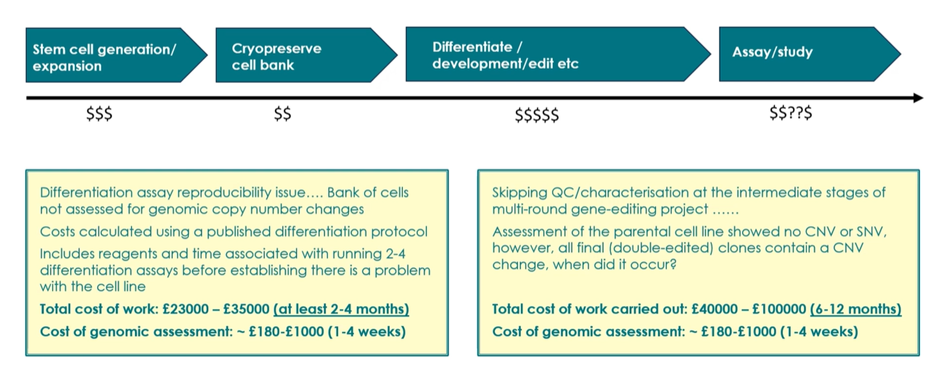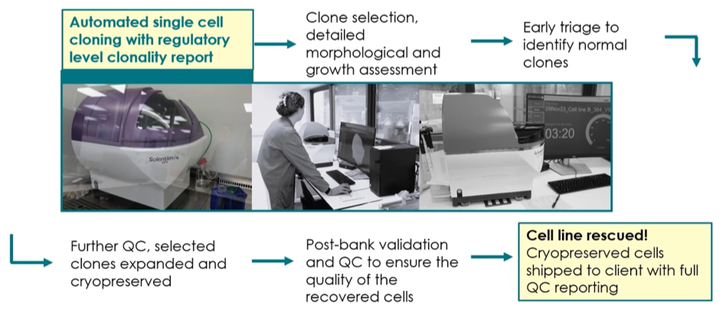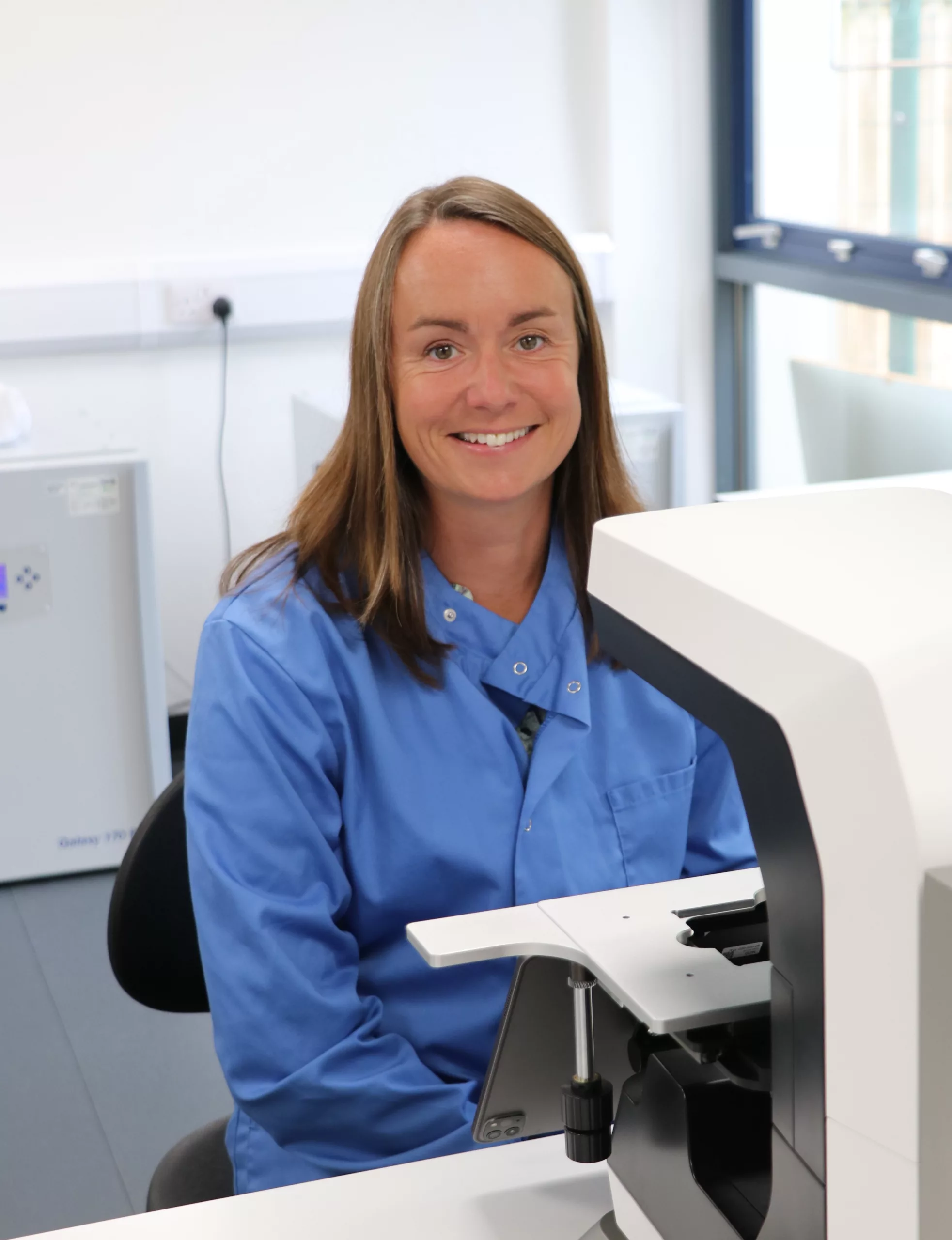Good news! There is hope after a genomic abnormality has been identified on your cell line! We now have a better answer for you than just “Throw it away”. In the following blog article, discover a new service that will bring relief to your lab.
Stem Genomics (SG): As an experienced stem cell scientist, what are your views on the importance of testing iPSCs in culture?
Dr C. RICHARDS. Genomic abnormalities can have a serious impact on assay and data reproducibility in pluripotent stem cell research and this was highlighted in the ISSCR document “Standards for Human Stem Cell Use in Research” last year. Some of these changes alter the cell’s growth, survival, differentiation capabilities, and have a significant impact on products and assays whether they are being used in drugs discovery or cell therapies.
There is often a concern that QC is expensive and therefore it is not included in budgets/grant applications etc, when in reality, we have demonstrated that the cost of characterization represents a fraction of the cost when things go wrong.
The image below depicts two real-life scenarios that give an idea of the scope of hidden costs when there is no testing carried out.
Nowadays, there are off-the-shelf genomic assays to support scientists, at varied costs. We have been using several tests from the Stem Genomics’ range. The idea is to detect CNVs and SNVs early enough in the process to lower the impact on resources and wasted time.

Source: Cellected
SG: So if I am a PSC research scientists who can afford to implement a robust QC, I should not need to worry about abnormal cell lines?
Dr C. RICHARDS: Checking more often will absolutely lower the risks of genomic abnormalities impacting your research, assays or products, however, it is estimated that 20-30% of cell lines will have develop a genomic anomaly at some stage, this is the nature of growing cells in culture. When that happens, historically the only solution has been to pause work, throw away the cells and investigate earlier passages or banks. Which can, in some scenarios, solve the issue but still has time and cost implications. However, the problem can re-emerge if the variant was below the level of detection. Switching to another cell line is also an option if you are early in your research but for many people who are years into their work, or, their cell lines are rare and precious, this isn’t feasible or cost-effective
For all these situations, your RESCUE solution could be a beacon of hope! Can you tell us more about this new approach for restoring cell lines in the event of genomic abnormality?
Dr C. RICHARDS: Dr LOFREDO and I wanted to give better support to stem cell scientists. When our clients were asking in despair “So what do we do now that we have detected an abnormality?”, we wanted a better answer than “Just throw it away”.
We thought of using single cell cloning to separate and identify normal cells present in a population. It is a great method for identifying wild type cells in a predominantly mutant population.
It took some time to refine our approach and after much consideration, we realized this would not be feasible by manual methods such as limiting dilution or colony picking and that automation was required. That’s when we approached Advanced Instruments to test their instruments for the purpose of RESCUE. It took us over a year to optimize, validate and develop the RESCUE service we are offering to clients now as iPSCs are sensitive cells and we needed to ensure we had robust and reproducible protocols.
The illustration below shows the various steps we go through to rescue a cell line:

Source: Cellected

Dr C. RICHARDS, Cellected CEO & Co-Founder
SG: What is your success rate?
Dr C. RICHARDS: Everything that we have run so far has worked. It is a numbers game at the end of the day and having the fully optimized protocols and automation allows us to assess much higher numbers of cells than we would be able to manually. We even had a situation where 90% of the cells were contaminated and we managed to rescue the 10% wild type. It is recommended to act fast so mutant cells don’t grow further.
SG: Are there any particular situations when you know RESCUE is not going to work?
Dr C. RICHARDS: The obvious would be if there are no normal cells left in the population and the abnormality or unwanted variant is present in the cells that were reprogrammed. For mosaic samples mutant cells can outcompete the wild-type cells which is why it is critical to monitor them frequently and, if it is needed, rescue them as early as possible.
Note: this service is available for all stem cell types. Samples can be sent from all around the world.

